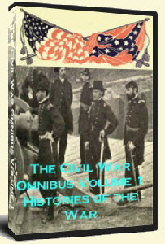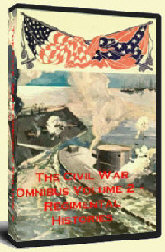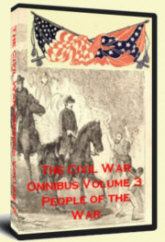Feeling that the war was nearing its end, I desired my cavalry to be in at the death.Sheridan on his desire to rejoin the Army of the Potomac
With both Jubal Early and most of the civilians in the Shenandoah Valley still choking on the smoke of “The Burning,” General Philip Henry Sheridan, sensing that the tide of the war was turning toward the destruction of Robert E. Lee and the Army of Northern Virginia, took his men to Petersburg, rejoining the Army of the Potomac. Once again the Army of the Potomac would bask in the glory of “Little Phil,” as it was during this stint with the Army of the Potomac that Sheridan’s reputation as a hero was secured, as he managed to bring down not only Jubal Early’s men, but Lee and the Army of Northern Virginia, as well.
Sheridan wasted no time resting on his Winchester laurels as he ventured to Petersburg. At the Battle of Waynesboro, he forced 1,500 of Early’s men to surrender. Less than month later, he forced Lee to flee Petersburg. Only days later, at the Battle of Sayler’s Creek, Sheridan dealt Lee a final, crushing blow by capturing almost a quarter of his remaining men.
It is possible that Sheridan can be credited with the surrender of Lee at Appomattox Court House. On April 8, 1865, Sheridan and his men trapped Lee at Appomattox Court House, resulting in the surrender of the Army of Northern Virginia. The day before, Lincoln had sent Grant a telegram that read: “Gen. Sheridan says ‘If the thing is pressed I think that Lee will surrender.’ Let the thing be pressed.”
With Sheridan at the forefront, the Army of the Potomac had finally managed to defeat an enemy that despite being outnumbered, undersupplied, and vastly overworked, had proven elusive for four years. Much of the glory went to Sheridan, whose actions were seen as elemental to the final defeat of the Army of Northern Virginia and the end of the war.
I believe General Sheridan has no superior as a general, either living or dead, and perhaps not an equalU.S. Grant
Sheridan’s military career was still fairly young at the end of the Civil War, and Sheridan was not content to bask in the glow of his Civil War victories. He continued to serve in the U.S. Army, but in the end, perhaps did his career and his reputation more harm than good.
Within a year after Lee’s surrender, Sheridan commanded 50,000 in on the Mexican border of Texas to destroy France’s Napoleon III’s puppet regime in Mexico. Although the military effort at the border that Sheridan helmed was felt to be a success, Sheridan later admitted to arming Mexican resistance fighter Benito Juarez and his men.
During 1866-1867, Sheridan served as the military governor of the Reconstruction governments in Texas and Louisiana, a period that was marked by controversy. He removed several local officers, replacing them with Republican officers more sympathetic to the Reconstruction politics. He fell afoul of President Andrew Johnson for these and other moves, and Johnson removed him, stating that “[Sheridan’s] rule has, in fact, been one of absolute tyranny, without references to the principles of our government or the nature of our free institutions.”
Following his dismissal, Grant appointed Sheridan to the Department of the Missouri, in order for Sheridan to tamp down the Indian uprisings that were threatening to result in outright war. Vastly undermanned, Sheridan resulted to the tactics he’d used during the Shenandoah campaign, looting and killing in order to bring fear and submission to the tribes.
Not content to bully the Native Americans onto their reservations, Sheridan felt compelled to nearly destroy the whole Native American society. His disregard for their culture or even their livelihood was obvious; Sheridan’s policies regarding hunting in the Great Plains destroyed the bison population and in doing so the Native Americans’ food source. Although accepted at the time, Sheridan’s actions in the Department of the Missouri have come to be viewed as racist and inflammatory, and have thus poisoned his legacy.
Yet Sheridan’s post-Civil War career was notable for one achievement that is a national landmark – Yellowstone National Park. The preservation of the natural landscape in the Yellowstone region became an important cause for Sheridan, and he was almost single-handedly responsible for the protection of the area that resulted in the national park.
Philip Henry Sheridan was a man of contradictions – one who fought valiantly against slavery, but sought to destroy the Native Americans, one who resented the heavy hand of superiors such as General George Meade but ruled Reconstruction-era Texas and Louisiana with just as heavy a hand. His is a tainted, but altogether fascinating legacy.


